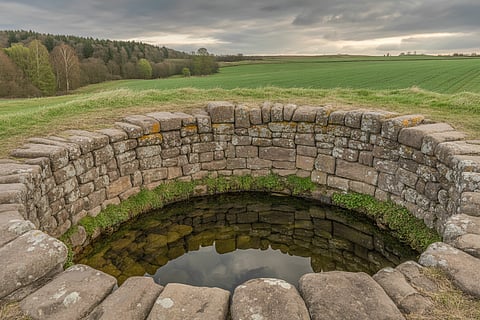

Across Denmark’s countryside, especially in regions like Jutland and Zealand, archaeologists have uncovered ancient Viking wells that still hold water even during unusually dry summers. These wells, some over a thousand years old, reveal how Viking engineers understood groundwater far better than their simple tools would suggest. Their ability to stay full during droughts begins with where the Vikings chose to dig.
Instead of placing wells in open fields, they built them beside natural depressions, marsh edges, or slopes where underground aquifers lay close to the surface. These aquifers act as hidden rivers beneath the soil, feeding water into the wells even when rainfall stops. The Vikings identified these locations by observing wet patches, plant growth, and the behaviour of animals—natural signs of shallow groundwater.
The wells themselves were lined with timber or stone arranged in tight interlocking patterns. These linings prevented collapse while allowing water to seep in gently from all sides. Because the walls were porous, groundwater could refill the well continuously. Even when the upper soil layers dried, deeper aquifers kept flowing.
Some wells were also dug deeper than modern expectations. Instead of relying on surface moisture, Viking wells often reached down into stable, slow-draining layers of sand and gravel. These layers act like giant underground sponges that release water gradually throughout the year.
Together, the choice of location, depth, and porous construction created a smart, reliable system long before mechanical pumps existed. Even today, when Denmark experiences dry spells, these ancient wells remain partly filled—a quiet reminder that the Vikings’ survival depended on reading the land carefully and building structures that worked with nature, not against it.